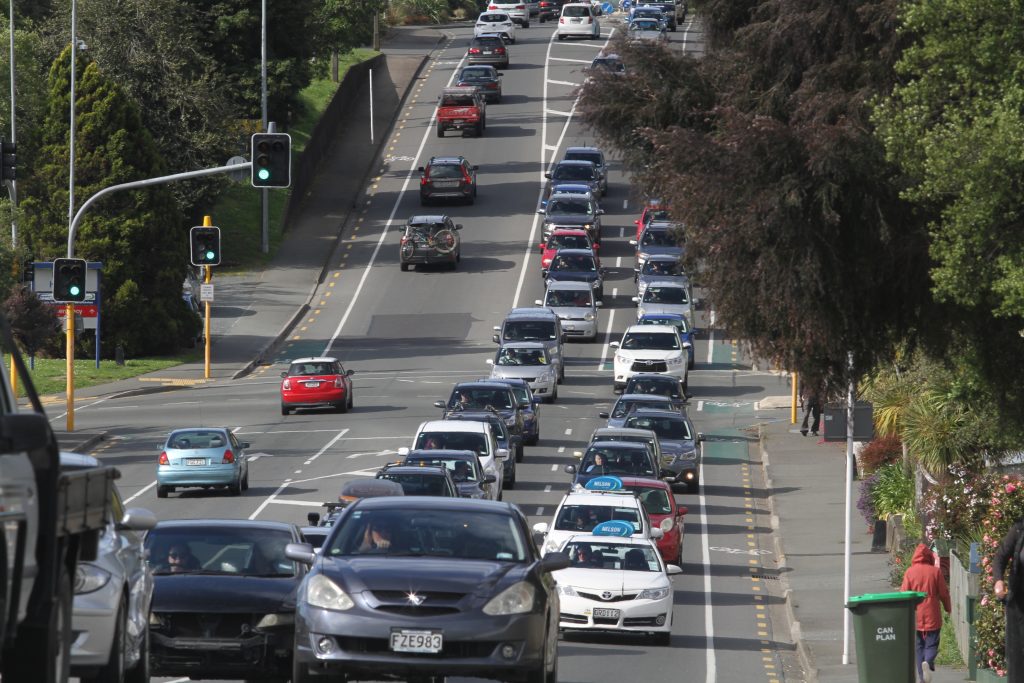Southern Link would create city centre ‘gridlock’


Waka Kotahi modelling shows that the Southern Link would only deliver initial time savings and then result in generally longer travel times in the future. Photo: Sara Hollyman.
The Southern Link is often touted as a solution to Nelson’s traffic problems whenever a major disruption occurs, but it’s not currently provided for in any traffic plan. Max Frethey talks to the experts about why that is.
Sometimes called the Inland Route, the Southern Link is a proposed third arterial road for Nelson that would link St Vincent Street to the Annesbrook Roundabout via Toi Toi, and replace Rocks Road as the State Highway.
However, the project is long embattled and has never progressed despite support from Nick Smith, when he was the region’s MP and Nelson’s former mayor Rachel Reese.
Robyn Elston, the national manager system design for Waka Kotahi – New Zealand Transport Agency, confirmed the Southern Link was not in the agency’s 30-year programme nor currently funded or planned for.
She referenced the Environment Court ruling against the project in 2004 which said the proposed location was “fundamentally… the wrong place to put a State Highway.”
The ruling cited social severance, proximity to schools, air pollution, and a lack of evidence that the route would improve safety and efficiency as reasons why the route shouldn’t be advanced.
In the meantime, Waka Kotahi’s strategy for the region focuses on optimising the efficiency of the current network with the Southern Link only being considered once the measures contained in the Nelson Future Access Project are completed by 2050.
However, the land along the Railway Reserve where the route would be built is being retained as a long-term resilience option.
But if the land’s being saved for the Southern Link in case it’s needed in the future, why not just build the road now and save today’s commuters some time?
The problem is that, for the most part, the construction of the Southern Link would only have a small impact on commute times.
Waka Kotahi completed a set of traffic modelling in 2020 – using data from the 2018 census and projections from the region’s 2019 future development strategy – that compares travel times along Rocks and Waimea Roads in 2018 with the estimates for 2028 and 2048.
It shows that if the Southern Link was built by 2028, travelling along the newly-built route in that same year would save less than three minutes when compared to travelling along Rocks or Waimea Roads.
Alternatively, travelling along Rocks and Waimea Roads in 2028 once the Southern Link has been completed would generally save only about a minute compared to a ‘do minimum’ approach to regional road infrastructure.
Any significant timesaving would only become evident in the future, with travel times decreasing by half or more for evening peak traffic travelling from Nelson’s city centre to Annesbrook, but this is the only instance where time would be saved.
In the other cases of evening peak traffic travelling in the opposite direction or morning peak traffic travelling in either direction, the modelling shows that commute times in 2048 along Rocks and Waimea Roads would be up to 4 minutes longer than they were in 2018.
“This is typical of projects that provide higher capacity into an area… but do not provide capacity downstream in the local road network for additional traffic to disperse,” Robyn says.
“The Southern Link project lets vehicles get to the city faster. But because it would concentrate more traffic at intersections entering the city, it would delay them at this point for longer.”
“It would be gridlock,” Nelson MP Rachel Boyack agrees.
“The reality is that when you build a new road and you add a new route, it eases the problem for a while but then you get it back again and you get it back even worse.”
However, Opposition Leader Christopher Luxon said during a visit to Nelson in April that the Southern Link would be back on the agenda if the National Party won this year’s general election, describing it as an “important project”.
However, National’s transport spokesperson, MP Simeon Brown wasn’t as decisive when asked about the Southern Link last week.
“We need to make sure that we’ve got a government policy statement which is focusing the investment in the National Land Transport Fund on the right projects...,”he says.
“Whether it’s the Southern Link or Hope Bypass, then it will be a focus on delivering.”
